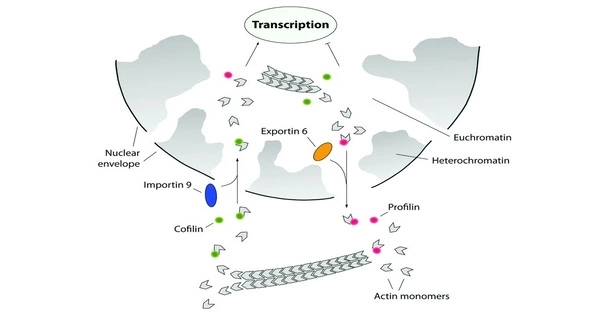Actin nucleation cores are protein trimers composed of three actin monomers. It refers to the central structure or region within a cell that initiates actin monomer polymerization into actin filaments. It is referred to as a nucleation core because it initiates the energetically advantageous elongation reaction when a tetramer is formed from a trimer. Actin is a globular protein that is essential for many cellular processes such as cell motility, cytokinesis, and cell structure maintenance.
Actin protein dimers and trimers are inefficient in terms of energy. Actin nucleators, such as the Arp2/3 complex of formin family proteins, are frequently involved in this process. Actin nucleation factors initiate actin polymerization within cells.
In cells, there are several actin nucleation cores that serve as sites for the formation of new actin filaments. The Arp2/3 (Actin-related protein 2/3) complex is a well-known actin nucleation core. The Arp2/3 complex, which is made up of seven subunits, is involved in the formation of branched actin filaments. This branching is required for processes such as cell migration and membrane protrusion formation.
Many different proteins that can mediate de novo filament nucleation interact with and promote actin. This provides the initial impetus for protrusive membrane formations. Pseudopodia, invadopodia, and non-apoptotic membrane blebs are examples of these entities.
Another important actin nucleation core is the formin complex. Formins are proteins that promote the nucleation and elongation of linear actin filaments. Unlike the Arp2/3 complex, formins facilitate the formation of unbranched actin filaments. Formins play a role in various cellular functions, including cell division and the maintenance of cell shape.
Another actin nucleation core is the WAVE (Wiskott-Aldrich syndrome protein-family verprolin-homologous protein) complex. It activates the Arp2/3 complex and promotes actin filament nucleation, especially at the leading edge of migrating cells.
These actin nucleation cores collaborate to control the actin cytoskeleton’s dynamics, influencing cell shape, movement, and other cellular processes. Actin nucleation must be precisely regulated in order to maintain cellular structure and function.
















